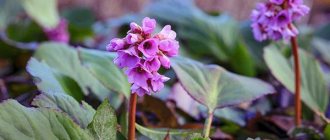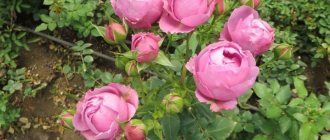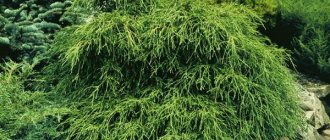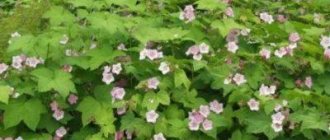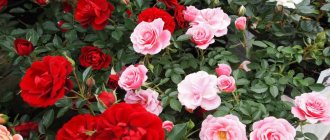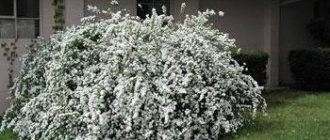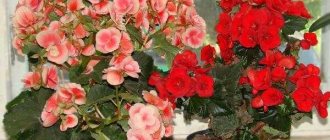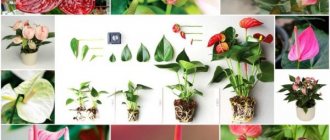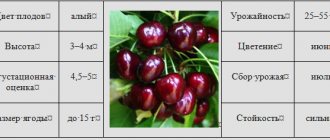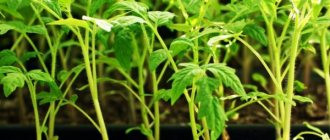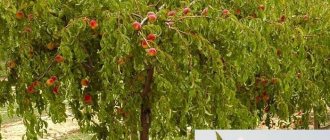Encyclopedia of Plants
Pseudotsuga is a genus of evergreen coniferous trees belonging to the Pine family. The plant comes from the Pacific region and is widely distributed in America and Mexico. Visually, the tree is very similar to a fluffy fir. Its height can reach 100 m, width about 4 m. Other, no less popular names for the plant are “Pseudotsuga”, “Douglas Fir”. The culture is long-lived; it is not uncommon to see hundred-year-old specimens.
- 1 Description of the plant
- 2 Types of culture
- 3 Planting and care 3.1 Reproduction of pseudotsuga
Menzies's Pseudo-tsuga
When remembering coniferous trees, we first of all talk about spruce or pine.
And few people know such a majestic tree as pseudohemlock. This tree was lucky - it was opened twice. It was first discovered by a doctor and naturalist from Scotland, Archibald Menzies, in the western expanses of North America. Later it was “discovered” by David Douglas, a botanist and traveler from England. In scientific reference books you can find the first name - Douglas fir. But after a while, the tree was identified as a genus of hemlock, but later a special genus was identified - pseudo-hemlock. Now the unique tree is called Pseudotsuga Menzies, Douglasia or Douglas fir.
Pseudotsuga is a huge evergreen tree that in the wild can grow up to 100 meters in height. The description of the tree mentions a powerful tree trunk that is covered with thick, brownish-gray bark with deep cracks. The crown is shaped like a cone, the branches extend from the trunk in a horizontal direction, forming regular tiers. The needles resemble fir, the needles are arranged flat in one line. Fallen needles leave lumpy marks (the same can be observed in spruce trees).
The tree is dioecious. Single cylindrical cones of the male pseudotsuga are located in the axillary parts of the needles. The female cones have many light brown hanging scales that mature within a year. The seeds are located in scales of 2 pieces, and the long winged scale, which is located above the seed tongues, carries them in the wind over long distances.
The genus pseudo-hemlock includes from 7 to 18 species of plants that grow in the vast expanses of North America and East Asia. There is no consensus in the scientific community, which is explained by the fact that many varieties arose and exist in nature itself, without the intervention of science. But mostly the species are not frost-resistant. The hardiest species is rightly considered to be Menzies or Glauk's pseudotuga.
Description and characteristics
It is believed that pseudotsuga has two discoverers who discovered and described it at different times - the Scottish biologist Mencies and the English botanist Douglas. Therefore, in botanical reference books the species appeared under the name Pseudohemlock of Menzies or Douglas. Such confusion with names has persisted to this day.
The culture is a long-lived evergreen conifer, capable of growing in natural conditions for up to 700 years. The genus belongs to the Pine family; all varieties grow in the wild in the western part of the North American continent and in the eastern regions of Asia. In adulthood, the tree reaches 100 m in height, but the average European specimens range from 40-50 m.
In terms of external characteristics and the shape of its needles, the plant resembles a fir. The main distinguishing feature is the exotic cones and ends of young shoots. In young specimens with a small crown, the bark is light and smooth, but after a few years it becomes dense, with numerous cracks, and darkens.
This conifer has two types of cones: male and female. On males there are red-yellow scales, elongated in shape. The female ones have a reddish tint and always grow at the ends of the shoots. Seed ripening continues throughout the season, after which the scales open and spread by self-seeding with the help of wings. It should be taken into account that reproduction starts at the age of over 10 years.
In its natural environment, pseudohemlock prefers open places with good lighting, tolerates dry periods well, but is demanding on soil looseness. Tolerates low temperatures well. All these qualities make it possible to successfully use it for landscaping city parks and private areas.
Varieties and varieties
About 30 varieties of this type of pseudotsuga are known. But only four varieties are most used.
The Holmstrup pseudosuga was bred in Denmark in 1962. This is a slender, slow-growing tree, the maximum height of which can be a maximum of 8 (but more often 5) meters. Very dense crown of conical shape, raised branches. The needles are rich green.
Pseudo hemlock Serpentine – German variety. When describing the variety, a vertically twisted trunk with twisting and penetrating branches provides a spectacular and unusual appearance.
Pseudotsuga Fastigiata is a tall tree with a dense crown in the shape of a narrow pyramid, raised branches, bluish-colored needles.
Pseudo hemlock Glauca Pendula is a variety bred in Germany in 1891. It is a low tree with a weeping crown. The hanging branches and top look original, making the tree look like a weeping willow. The needles of Glauka have a pronounced blue tint.
Types and varieties
At the moment, through the efforts of breeders, many varieties with different characteristics have been developed. Among them, you can select plants with different shades of needles, crown shape, height, growth rates, temperature requirements, etc.
The crown of dwarf varieties can be only 0.6 m in height, which is very suitable for small areas. In addition, the main parameter that you should pay attention to at the time of purchase is the growth rate during the first years, since a fast-growing specimen can crowd out neighboring plants in the first seasons.
At the moment, the most common varieties and hybrids are:
- Blue Wonder. The crown reaches 5 m in height. Growth is uneven, from slow to medium. Individual branches may deviate from the general level. The color of the needles is blue with a matte coating. Forms a cone, but requires careful pruning.
- Mayerheim. The main trunk grows up to 10 m in height, the crown is columnar. The branches are short with bluish needles.
- Fletchery. A dwarf hybrid with a slow growth rate, it has the shape of a ball with a dense surface. During the spring growth of shoots, it releases an increased amount of phytoncides, therefore filling the garden with the aroma of pine resins.
- Pendula. A tall variety, the top bends to the side, especially after 10 years. The drooping shape of the apical shoots makes the tree stand out from the rest. The needles are colored bluish or rich green.
- Holmstrup. Forms a cylindrical crown up to 8 m. Growth rate is average. Bright green needles set off the red cones.
- Serpentine. A hybrid resembling a weeping willow. The trunk can twist in a spiral.
- Large-nose. A distinctive feature is large female cones up to 18 cm in size. They are more demanding on the watering regime, but can also grow in places with unstable precipitation.
- Chinese. The main feature is the crown, which resembles an ordinary deciduous tree. The cones are colored in purple shades.
- Fastigiata. The main trunk is visible through the crown, which is quite sparse. The cones are densely spaced and have long scales.
Blue Wonder
Fletchery
Pendula
Holmstrup
Serpentine
Chinese
Features of cultivation and reproduction
Pseudotsuga Menzies, like most conifers, is an unpretentious plant. But she still has certain whims.
This tree likes to grow in loamy and well-drained soils. Does not tolerate additions of sand and clay in the soil. Podzolic or carbonate soils are acceptable for its cultivation. The best for pseudo-hemlock is a composition containing 3 parts of leaf soil, 2 parts of peat and 2 parts of humus. When planting a seedling, it is imperative to lay a good drainage layer at the bottom of the hole - this can be pieces of brick, expanded clay or sand. Wet and dense soils are strictly unacceptable.
The tree is quite light-loving. For its planting, choose open areas with moderate lighting. This especially applies to young plantings: it is recommended to shade newly planted seedlings from the bright sun.
Pseudotsuga is propagated in two ways: by sowing seeds and cuttings.
The seeds ripen, as stated, during the growing season, but are formed in cones once every three years. This coniferous tree begins to be grown at home, for which the seeds are embedded in the soil to a depth of 2 cm. The seedlings grow in a flower pot for five years. A seedling that has reached this age is planted in a hole about a meter deep.
When carrying out cuttings from a tree in the spring, 3 or 4 year old side branches are cut off. The cutting must have a small piece of wood at the base - the so-called heel. The cut branches are immediately immersed in a solution of a growth stimulator and planted on a light earthen substrate with a mulch component. Cuttings take root at a temperature of 20-25 degrees with sufficient humidity and light conditions. The young seedling should not be kept in the sun - a semi-shaded place is ideal for it.
Article on the topic: Intermontane bristlecone pine description and features
It is believed that the seed method is more reliable, although it is quite lengthy. But a tree grown from seeds emerges stronger and more stable.
Conditions for growing pseudo hemlock
Pseudotsuga is unpretentious, but it also has its favorite soils. She prefers well-drained and loamy soil. Does not like sand and heavy clay. Can tolerate podzolic and carbonate soils.
The optimal substrate for planting will be a mixture of leaf soil, peat and humus. The ratio of parts is 3:2:2. If the soil where the gardener is going to plant the seedling is very dense, it is necessary to lay layers of drainage at the bottom of the hole - broken brick, expanded clay and sand.
In damp, dense soils, pseudohemlock will not grow well.
As for lighting, you should select areas of the garden that are not too dark. The tree prefers open places, moderately lit. It is better not to expose young plants to direct sunlight. Slightly shaded areas that are not damp are perfect for this type of coniferous tree. If the right place is chosen, caring for the tree will not cause any trouble. It will grow beautifully on its own and reach for the sun.
Subtleties of care
Pseudo hemlock is one of those plants whose care is not particularly difficult.
A newly planted young seedling requires close attention. It must be shaded from direct sunlight - the still immature needles can get burned. To avoid frostbite, the tree is covered with non-woven material. Such protection is removed only when persistent summer weather sets in. Only seedlings that grow in open ground for the first year require such care. Older trees are no longer covered for the winter; their spreading branches are tied up before winter in such a way that falling snow does not damage them.
When planting, pseudostuga is fed with complex fertilizers that are specially designed for coniferous trees. This is done in the spring. After 5 or 6 years of growth, humus or peat is added to the soil under the tree to make the soil more nutritious.
The soil under the tree is regularly loosened to allow oxygen to reach the tree's roots.
Pseudotsuga tolerates pruning well. During the first few years of growth, the tree's side shoots are trimmed, which encourages denser, more luxurious growth in subsequent years.
Water the tree regularly as soon as the soil dries out. The water consumption rate is from 10 to 12 liters. In dry weather, young seedlings and mature trees are sprayed with warm and soft water.
Pseudotsuga is resistant to diseases and has virtually no pests. Occasionally, aphids or fungus may appear on it.
Diseases and pests
Despite the fact that Douglasia is very resistant to diseases, yet, like other members of the conifer family, it can be attacked by aphids. If this happens, you should use the drug “Aktara” or “Commander”, which effectively destroy foci of infection by this pest.
The roots and crown of pseudo hemlock are sometimes affected by a fungus. A sick pseudotuga loses its decorative appearance, becoming covered with a characteristic whitish coating, and stops growing and soon dies. This occurs when the soil is waterlogged or infected from neighboring plants. The affected tree can be saved using antifungal drugs "Baktofit" or "Vitaros". It is important to find the source of infection; if it is neighboring trees, they also need to be disinfected or destroyed to avoid the spread of infection.
Pseudotsuga - soft needles and unusual cones
Pseudosuga is an evergreen coniferous tree from the Pine family. The natural habitat for the plant is China, Japan and the Pacific coast of North America. Most often, these giant trees resemble the usual spruce with a conical crown and slightly drooping branches. Cones with small “tails” under wooden scales are also highly decorative. Pseudo hemlock can easily compete with the usual pines, firs and spruces. In just a few years, a beautiful evergreen tree with a dense emerald or bluish crown will grow on the site.
A little history of Pseudo hemlock thyssolifolia
The discovery of America, especially the northern part of the continent, where climatic conditions are closest to European ones, with its incredible species diversity of tree and shrub flora, pushed Europeans to the development of botanical science and, in connection with the discoveries of unknown plants, to attempt to schematically unite individual species.
Traveling in 1791 along the Atlantic coast of the New World, the Scottish naturalist A. Menzie encountered unknown giant trees on Vancouver Island.
The naturalist's brief description of the new breed did not make it possible to form an accurate idea to which known genus they should be classified.
The detailed description made in 1803 by his fellow countryman, botanist A. Lambert, did not shed any light on the problem. From this moment on, scientists begin to “football” the stranger from generation to generation, but she does not fit into any one.
It was a yew-leaved pine (in England - Columbian pine, or British Columbia pine, in the USA - Oregon pine), then it became a yew-leaved fir, or Douglas fir. The last name is given in honor of the Scottish scientist D. Douglas, who was the first to bring its seeds to Europe. Then there was spruce and hemlock.
And finally, in 1857, E. Carter, overcoming stereotypes, isolated the breed into an independent genus of pseudo-hemlock, and the “Vancouver miracle” became the yew-leaved pseudo-hemlock (P. taxifolia [Poir.] Britt.). True, some botanists call it in honor of its discoverer - Menzies pseudo-hemlock (P. menziesii [Mirb] Franco).
Today, the genus Pseudotsuga Car., or false tsuga, has 18 species, of which 12 live in North America, and the rest in Western and Southwestern China, on the island of Taiwan and Japan. Fossil remains of ancient members of the genus have been found in Tertiary deposits in Europe and western North America.
Description of the plant
Pseudosuga or false suga is a tall slender tree. It can live up to 1000 years and reach a maximum height of 100 m. The diameter of the trunk of an adult plant is 4.5 m. The trunks and skeletal branches are covered with gray smooth bark. With age, it acquires a brownish-gray tint and cracks. Whole plates of bark gradually peel off, revealing thick cork tissue underneath. Thanks to this feature, pseudotuga can survive forest fires and other disasters.
Whorled branches are located horizontally. The cone-shaped, and with age - rounded crown of the pseudo-tsuga is distinguished by its density. Side shoots on branches usually droop. On the shoots there are soft emerald needles that grow in all directions. They have an elongated, flattened shape. The edge of the leaf is rounded, its upper side has a uniform green color. Two whitish longitudinal grooves are visible on the lower surface. The length of the needles is 2-3 cm. Each leaf remains on the tree for 6 to 8 years.
Cones begin to appear on trees that are 15-20 years old. Male cones are formed in the axils of one-year-old shoots. They are small in size and covered with beautiful red-orange pollen. The tops of young branches are decorated with decorative female cones. The oblong ovoid or cylindrical cone is 7-10 cm in length. The woody scales of the young cone fit tightly to each other. Hidden inside are small seeds that have long wings. These wings peek out and give the buds an extra attractive appearance. A ripe cone opens on its own and the seeds are released.
Description of the variety, external data of the plant
Appearance
Pseudotsuga is known to many under such names as Douglasia, False Tsuga or Douglas fir. This plant belongs to the Pine family and is an evergreen coniferous plant.
This plant is divided into 18 species, slightly less than half of which are native to Japan or China. Pseudotsuga thyssolifolia, or Pseudotsuga mensis, is one of the varieties, and is found naturally in the mountainous parts of North America. It is not uncommon to find it a little west of British Columbia, all the way to New Mexico and California. Trees fill nearly half of North America's forestland.
In height, all representatives of the genus grow within 100-140 meters; in cross section, the diameter of the trunk can be 4.5 m.
Interesting! This coniferous plant can grow in one place for up to 700 years, but more mature centenarians can also be found in nature.
Initially, the crown has a cone-shaped outline, but with age it becomes more and more rounded. The branches on the main trunk are densely arranged and perpendicular to it. Lateral and long shoots, especially with age, look slightly drooping.
At the initial growth stage of Douglas, the bark has a gray-green tint, but over time it acquires richer brown tones. The bark becomes covered with cracks and increases in thickness up to 35 cm. Over time, these growths peel off and provide access to the cork part of the trunk.
This interesting property allows Oregon pine, as pseudo-hemlock is also called, to recover from the effects of natural disasters, including fires.
On the shoots, the bark is initially colored yellow-brown with a gloss. Due to the flat needles, it looks like a fir. They can be from 1.5 to 2.5 cm in length, occasionally growing up to 3.5 cm, and are pointed on top. The color of the needles is emerald and blue.
Interesting! Douglasia needles are monochromatic only on the upper side, below, there are 2 longitudinal grooves, which is another similarity with fir. Once grown needles retain their freshness and color on the shoots for up to 8 years.
Pseudohemlock cones have an elongated outline, and they range from 7 to 12 cm in length, the width varies between 4-4.5 cm. Their growth is characterized by hanging down on the shoots.
On young shoots, one year old, male cones are formed in the axils, which are smaller in size. Red-orange pollen can be seen on the surface.
At the ends of the branches, female cones are formed, which in their young state are distinguished by tightly fitting scales and a woody structure. These scales are designed to protect still unripe seeds.
The shifts have small wings that sometimes peek out from under the scales, which adds to the attractiveness of these parts of the Douglas fir tree. Depending on the type of conifer, the cones sometimes take on an uncharacteristic purple hue, which makes them even more interesting.
The fruits ripen in the same year that the cones grow, which is approximately the end of summer, the beginning of autumn. At this time, the scales begin to move away from the surface, exposing the ripened seeds. They easily fly away from an adult plant over long distances. Thus, pseudotsuga reproduces under natural conditions.
Interesting! The cones themselves fall off over time, leaving room for new ones. This happens mainly in winter. The first fruiting can be seen only 7-12 years after planting.
The most famous varieties
Pseudotsuga menziesii in lat. Pseudotsuga menziesii is also known as Douglas fir or spruce, Pseudotsuga thysolifolia. This is the most famous variety of the plant. It is widespread in North America, and with its help forests of impressive size are formed.
This is a fairly powerful plant, which includes several of the most famous varieties in its genus:
- Glauka Pendula or pseudotsuga Pendula, in lat. Glauca Pendula is characterized by very slow growth, high frost resistance and straight lateral branches. Shoots form on them, which descend downwards, resembling a deciduous willow tree. The variety's needles are blue and short.
- Blue Wonder is up to 5 meters in height, taking on the shape of a cone with age. The needles also have a bluish tint.
- Holmstrup has a high and dense crown, its height does not exceed 8 meters. The needles grow quite densely; they are colored emerald or bright green.
- Meyerheim does not exceed 8 m in height. Short and straight side branches with shoots grow on the high trunk. The crown forms a cylindrical outline, which becomes much more visible with age.
- Pseudo hemlock Serpentine is the result of selection, which is distinguished by the presence of a drooping crown with curved shoots. The trunk is also not entirely straight and is increasingly taking on a wavy shape.
Pseudo hemlock is a subspecies of the Menzies variety. It is also found in North America, forming dense forests in rocky Canada. This tree grows at a level of 600-3000 m above the sea. Externally, it is a very powerful plant, reaching a total of 55 m in height. The diameter of the trunk itself can be approximately 2 m. Externally, the tree can be confused with fir or classic spruce.
The crown of the variety is conical, the roots are very branched and go to great depths. This Douglasia is completely undemanding in terms of soil composition and can grow in clayey, heavy substrate. The gray pseudotuga prefers illuminated areas, and it adapts well to urban conditions.
Interesting! This variety is characterized by rapid growth and responds well to forced transplants, even in adulthood. This is a drought-resistant variety that is similar in wood quality to larch.
Pseudo hemlock is found only in southern California in the mountains. The cones of this variety are the largest among all known varieties, which became the basis for obtaining this name. The height of this coniferous tree ranges from 15-30 m; in cross-section, the trunk is about 1.5 m. The trunk is as straight as possible, and the crown forms a conical outline.
The needles outwardly look like bluish needles, 2-5 cm long. They stay on the shoots for up to five years and do not fall off during this entire time. The female cones are much larger than those of the Menzies variety, and are about 18 cm in length.
Seeds are naturally dispersed by birds and mammals. The first fruiting is possible in the 20th year of life of this pseudo-tsuga. For cultivation, it is advisable to choose humid areas with a mild climate.
Varieties of pseudo hemlock
The genus of pseudotsuga is small in number, only 4 species are registered in it. The most widespread is Menzies' pseudotuga . It grows in the rocky mountains of North America. The monumental plant, up to 100 m high, has a pyramidal, uneven crown. The lumpy, cracking bark is colored bureau gray. Horizontal branches with a whorled structure are covered with greenish-yellow needles. Straight or curved, soft to the touch needles grow 2-3.5 cm in length and 1-1.5 mm in width. The cones are cylindrical in shape and grow 5-10 cm in length. The yellow-brown scales open the same year and rounded seeds spill out onto the ground. Popular varieties:
- Glauka is a slow-growing, frost-resistant tree with straight shoots and drooping side branches, covered with short bluish needles;
- Blue Wonder - a tree up to 5 m high, distinguished by a cone-shaped bluish crown;
- Holmstrup - a plant 3-8 m high has dense emerald vegetation of a conical shape;
- Mayerheim - a tree up to 10 m high grows short, erect branches, they form a cylindrical bluish crown.
Related article: Chinese juniper description and features
Pseudo hemlock gray. A strong monumental tree is covered with soft bluish needles. The height of adult specimens reaches 55 m. This species is resistant to drought and cold. It grows faster than others and has slightly ascending branches.
Pseudotsuga large-cone. A tree 15-30 m high is found on low mountain slopes. It has a thick, corky bark with a brownish-gray coating. The bluish-green needle-shaped leaves are 2.5-5 cm long. They remain on the branches for up to 5 years. The length of large oblong cones is 10-18 cm; large seeds are hidden under brown three-toothed scales. The plant prefers a more humid and mild climate.
Common varieties
Pseudotsuga sizaya is a variety of pseudotsuga menzis. Grows up to 40 meters. Outwardly, it looks like a large spruce. It has bluish-green needles located at an acute angle to the shoot. Young branches are raised, and old ones are located horizontally. The cones are hanging, 4-7 cm long. It has a well-developed root system. It is not picky about soil, but prefers light, loose soil.
Pseudotsuga menziesii serpentine (pseudotsuga menziesii serpentine) is a dwarf variety that reaches up to 3 meters in height and 2.5 m in width at maturity. It has an unpredictably branching crown. All branches are located chaotically and twisted in a spiral. Each copy is different from the previous one. The needles are green.
Pseudotsuga menziesii glauca pendula - has a weeping columnar crown. The blue needles that grow on young shoots in the spring from sharp elongated buds give the variety an extremely decorative appearance. Reaches a height of 3.5 m, the width of the crown of a mature plant is 2.5 m. The crown is drooping, wide and unevenly developed. The cones are yellow-brown, 5-10 cm long.
This variety is the most popular and beloved among designers; its appearance strongly resembles blue spruce.
Pseudo hemlock menzis graceful grace Weeping form, with gracefully hanging branches, not requiring support. The needles are silver-green-blue. Winter-hardy, but loves places protected from winds. Very shade tolerant. Moisture-loving, grows well in well-drained loams.
Reproduction methods
Pseudo hemlock can be propagated by seeds and cuttings. If the seeds are stored in a cool place, they can sprout after 10 years. In a warm room they become unusable within a year. The embryo in the seed is under a dense crust; in order to awaken it, cold stratification is necessary. Before winter, pseudo-hemlock is sown in greenhouses or pots in loose soil. The seeds are buried 1.5-2 cm and covered with mulch on top. In winter, it is worth covering the crops with snow. The first shoots appear in the spring; a month later they are pruned and thinned out. It is necessary to grow seedlings at a temperature of +18...+23°C in a well-lit place. Protection from direct sunlight is necessary. From spring, the plants are kept outside and covered with film for the winter. They can be planted in open ground next year.
To propagate pseudo-hemlock by cuttings, it is necessary in the spring, before the buds awaken, to cut branches of young plants. They should have an old piece at the base. The cuttings are buried in loose, well-drained soil at an angle of 60-70°. It is important to maintain the orientation of the needles. The pot must be covered with a cap to maintain high humidity. During the rooting period, the air temperature in the greenhouse should be +15…+18°C. The soil should be moistened with great care to prevent rot. When the buds on the cuttings open, the air temperature is raised to +20...+23°C. Rooting takes 1-1.5 months. During the first winter, it is advisable to keep the seedlings in greenhouses, and from the next year, shelter is no longer needed.
Plant care
It is recommended to place pseudo hemlock seedlings in partial shade. They can withstand direct sunlight in the morning and evening, but the midday sun will negatively affect the beauty of the tree. It is best to take plants that are 5-8 years old. Transplantation and planting are carried out in early spring, before the buds awaken. It is necessary to dig a hole 80-100 cm deep. Use well-drained soil with neutral acidity.
Broken bricks and coarse river sand are poured into the bottom of the pit. The optimal soil mixture should consist of leaf soil, leaf humus and peat. The distance between plants is 1.5-4 m, depending on the variety.
Young pseudo hemlocks love regular watering. The soil is moistened as it dries. Every week a bucket of water is poured under the root. Regular spraying of the crown with warm water is also recommended. In order for air to penetrate to the roots after watering, the soil must be loosened.
You will only have to fertilize the pseudo hemlock in the first 2 years. To do this, use organic fertilizers in the form of peat or rotted manure. In the future, the tree will have enough microelements from its own fallen needles.
Although the crown of the pseudo hemlock is attractive in itself, it can be trimmed and given any shape. Even a small tree tolerates pruning normally.
An adult plant can withstand even severe frosts, but it is better to protect young seedlings for the winter. To do this, the soil near the trunk is mulched with peat, and also covered with fallen leaves and spruce branches to a height of 20 cm. It is recommended to tie up young flexible branches before wintering, as they can break under the weight of snow.
Article on the topic: Cherry laurel description and features
Pseudo hemlock is resistant to plant diseases and pests. Only in extreme cases are its roots and trunk affected by a fungal disease. Sometimes aphids settle on a plant; spraying with insecticides saves them.
Planting and care
Pseudo hemlock mensis is not very demanding on growing conditions, but still develops better in sunny, wind-protected, well-drained areas with loose, light, fertile soil.
When preparing a hole for planting Douglas fir, it is necessary to make a drainage layer consisting of broken bricks and expanded clay. Plant in an open, well-lit place, as it loves the sun.
When planting, it is necessary to apply a special complex fertilizer for conifers. At first, seedlings must be shaded to avoid sunburn. In winter, the young plant needs to be covered with agrofibre to protect it from frost. Adult specimens, well strengthened and growing rapidly, no longer require additional protection.
The soil around the plant must be loosened regularly to circulate oxygen. Pseudo hemlock is good at pruning. While the plant is young, its side shoots are pruned so that it forms a strong, luxurious crown.
Pseudo-tsuga: photos and descriptions of species
Like hemlock, the pseudo-hemlock plant prefers fertile, loose soil. The main advantage of these trees is the uniform color of the needles throughout the year. Most often in landscape design, pseudo-hemlocks of Menzies, yew-leaved and glaucous are used, which are particularly frost-resistant and resistant to sunburn. Read the description of the most common forms of dog leisure and look at their photographs.
Ornamental plant pseudosuga
Ornamental plant pseudosuga in the photo
Pseudosuga is an evergreen tree belonging to the Pine family. There are 18 known species and a large number of varieties. They are all monoecious, native to North America, Japan and China. Most of them are characterized by fast growth, shade tolerance, undemanding soil and drought resistance. The conical shape of the crown and horizontally located branches are similar to spruce and fir.
As you can see in the photo, pseudosuga, unlike fir, has hanging cones and soft needles without “suckers”:
In adulthood, the crown of the tree becomes flat-topped.
All types and forms of pseudo-hemlock not only exhibit high frost resistance, but, which is very valuable in garden design, do not suffer at all from the spring sun. They retain the natural color of the needles in all seasons of the year.
They propagate by freshly collected seeds and cuttings taken from young decorative forms.
As an ornamental species with a beautiful cone-shaped crown and gray needles, it is used in the design of garden plots. Undemanding to soil and moisture. Cold and smoke resistant.
Like spruce, decorative pseudo-hemlocks are suitable for single and group plantings; less often they are used in landscaping ponds and alleys. The shape of the crown can be maintained artificially by plucking out the buds in the spring before they bloom or by shortening young shoots.
When planting trees, you should keep in mind their mature size. Only then will the plants not interfere with each other. They will receive enough sunlight and begin to branch from the ground itself.
Below is a description of Menzies pseudo-hemlock, yew-leaved and glaucous.
